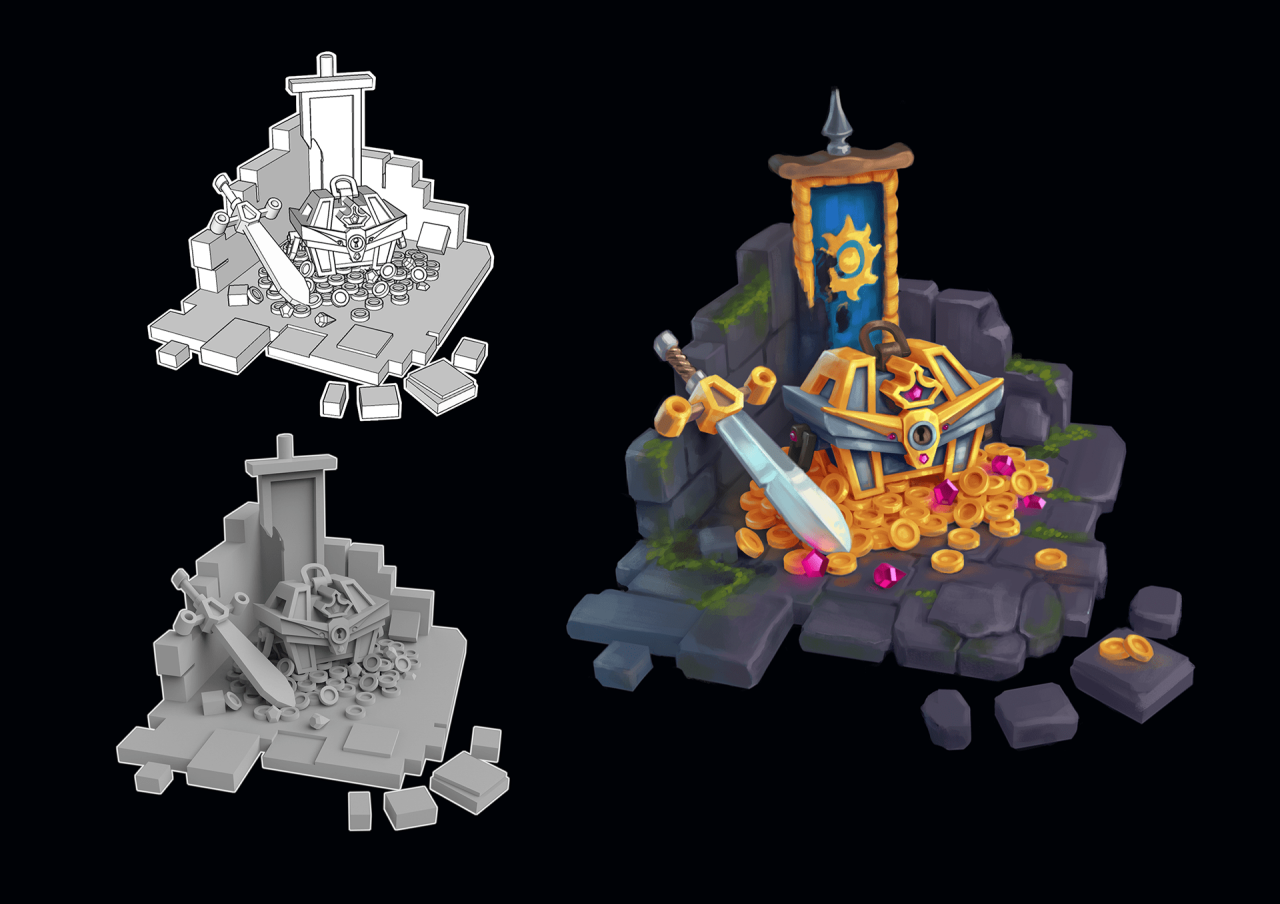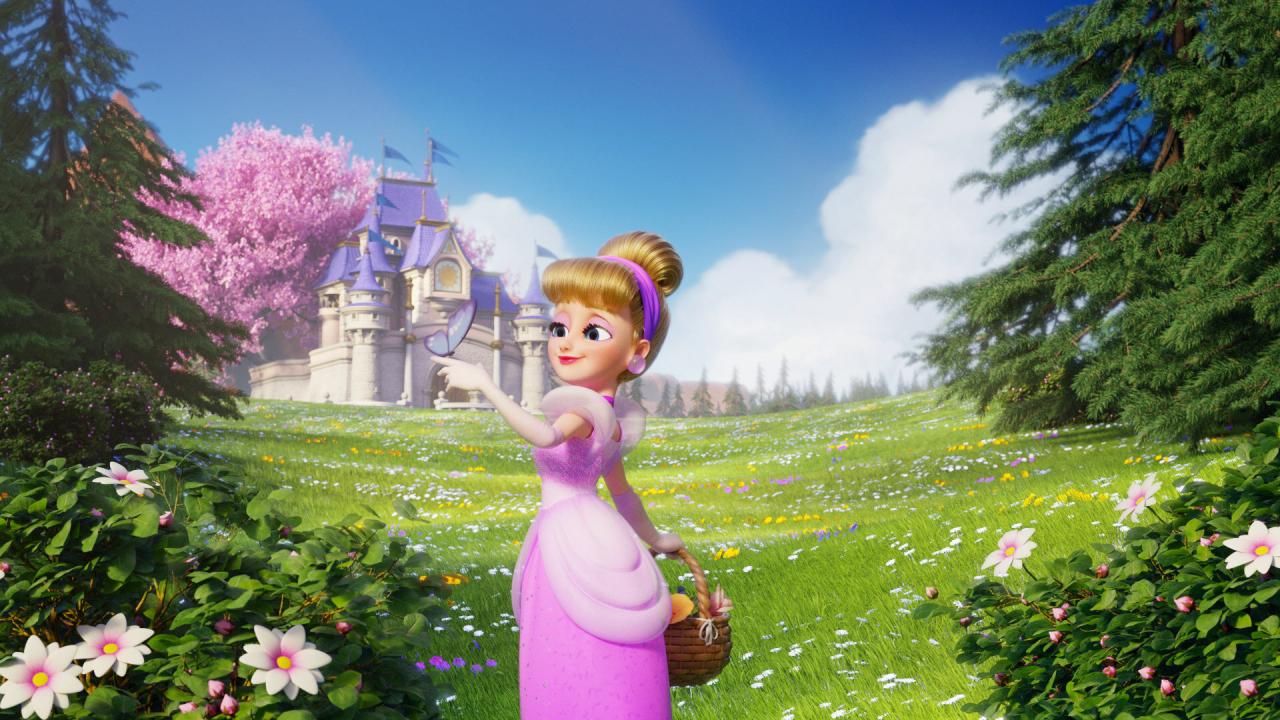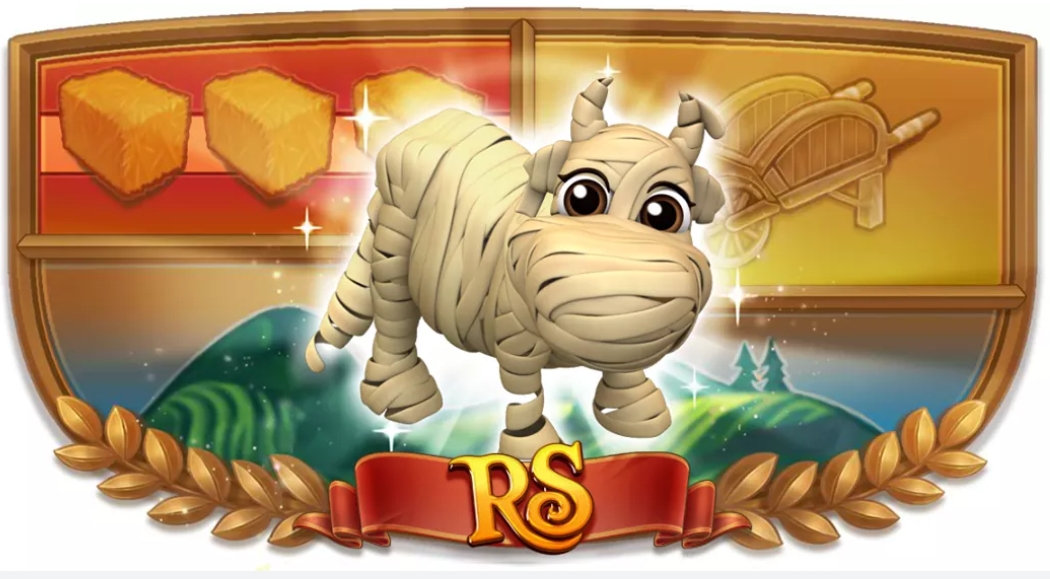Royal story opens a window into the fascinating world of monarchies, where power, romance, and betrayal intertwine to create narratives that shape nations and cultures. These tales have endured through centuries, evolving yet remaining rooted in their historical context, revealing the intricate fabric of society and art influenced by royalty.
From legendary figures who have left a lasting mark on history to the modern portrayal of royal families in various media, this exploration delves into the elements that define royal stories. As we uncover the themes that resonate across generations, we will also examine their role in literature, film, and the contemporary societal landscape.
Historical Context of Royal Stories
Royal families have long been emblematic of power, tradition, and national identity. Their narratives often reflect the socio-political landscapes of their times, influencing the course of history and shaping the cultural heritage of nations. The stories of these regal lineages not only provide insight into the past but also illuminate the values and beliefs of different societies, serving as a bridge between generations.
Throughout history, royal families have played pivotal roles in the formation of nations, often acting as symbols of unity and stability. Their stories are woven into the fabric of cultural and artistic expression, inspiring literature, visual arts, and folklore. From the majestic tapestries depicting royal battles to the grandiose operas celebrating love and betrayal, royal narratives have significantly influenced cultural norms and artistic movements across various epochs.
Influence on Culture and Art
Royal narratives have been integral to the evolution of culture and art throughout history, frequently serving as sources of inspiration for various artistic endeavors. The portrayal of monarchs, their triumphs, and tribulations has enriched the arts in multiple forms.
The significance of royal stories in culture and art can be observed in the following ways:
- Literature: Many renowned literary works are rooted in royal tales, such as William Shakespeare’s plays like “Hamlet” and “Macbeth,” which explore themes of power and ambition within royal contexts.
- Visual Arts: Artists like Diego Velázquez and Jean-Auguste-Dominique Ingres captured the essence of royal life in their paintings, immortalizing the grandeur and intricacies of courtly existence.
- Music: Composers like Wolfgang Amadeus Mozart and Giuseppe Verdi have created operas that depict royal stories, blending music with the drama of royal intrigue and romance, such as in “The Marriage of Figaro” and “Aida.”
- Film and Theatre: Modern cinema and theatre continue to adapt and reinterpret royal stories, bringing historical narratives to contemporary audiences, as seen in films like “The King’s Speech” and series like “The Crown.”
These examples illustrate how royal stories have transcended time, influencing various facets of human expression and societal values. They continue to resonate today, serving as reminders of the complex interplay between power, culture, and the artistic narrative.
Elements of a Royal Story
Royal stories often serve as mirrors reflecting the complexities of power dynamics, societal expectations, and human emotions. The intertwining of history, myth, and morality creates a fertile ground for exploring timeless themes that resonate with audiences across generations. These narratives frequently depict the lives of monarchs and their courts, revealing the intricacies of governance, loyalty, and personal strife.
In royal tales, common themes such as power, betrayal, and romance are prevalent, encapsulating the essence of human experience. Power often emerges as a central focus, illustrating how it shapes destinies and influences relationships. Betrayal frequently acts as a catalyst for conflict, driving characters to make choices that alter their fates and the fates of their kingdoms. Romance, with its capacity to transcend barriers and provoke deep emotional responses, adds layers of complexity to the narratives, often intertwining with political maneuvering and family alliances.
Common Themes in Royal Tales
The themes found in royal stories resonate with audiences because they reflect fundamental aspects of the human condition. These themes not only entertain but also provoke thought and discussion about morality and ethics within the context of authority.
- Power: The pursuit of power often leads to dramatic conflicts, as seen in Shakespeare’s “Macbeth,” where ambition drives characters to treachery and madness.
- Betrayal: Betrayal can unravel loyalties and friendships, exemplified in the story of King Lear, where familial bonds are shattered by deceit.
- Romance: Romantic entanglements can complicate political alliances, as depicted in the tale of Tristan and Isolde, where love defies the expectations of loyalty and duty.
Characterization of Royal Figures
Royal figures in literature and media are often characterized by a blend of grandeur and vulnerability. They embody ideals of nobility while grappling with personal flaws, which makes them relatable and compelling.
The portrayal of monarchs can range from tyrannical rulers to benevolent leaders, often highlighting their struggles with the burden of their responsibilities. For instance, in “The Crown,” Queen Elizabeth II is depicted as a resilient yet vulnerable figure, navigating the challenges of leadership amidst personal sacrifices and national crises. In contrast, characters such as Richard III are presented with darker, more ruthless traits, illustrating how the quest for power can corrupt.
“Royalty is a life of responsibility, shaped by public scrutiny and personal sacrifice.”
Narrative Structure in Royal Stories
The narrative structure of royal stories often adheres to a classic arc that includes exposition, rising action, climax, falling action, and resolution. This structure allows for an in-depth exploration of characters and themes, guiding audiences through the complexities of royal life.
Typically, these narratives begin with an introduction to the royal setting and key figures, establishing the stakes involved. The rising action unfolds as conflicts arise, often involving power struggles, betrayals, or romantic entanglements. The climax serves as a pivotal moment where the protagonist must confront their greatest challenge, leading to the falling action where consequences are explored. Finally, the resolution ties together the loose ends, offering closure to the narrative while often leaving room for reflection on the moral lessons imparted.
Through their intricate themes, rich characterization, and well-structured narratives, royal stories continue to captivate audiences, inviting them to reflect on the complexities of power, loyalty, and love.
Royal Stories in Literature
Royal stories have captivated readers for centuries, offering a glimpse into the lives of those who wield power and influence. These narratives often weave together elements of drama, intrigue, and romance, reflecting the complexities of monarchy and governance. Through literature, royal characters become symbols of ambition, loyalty, betrayal, and the human condition itself, allowing audiences to explore both the glories and the pitfalls of royal life.
The impact of royal stories on the genre of historical fiction cannot be overstated. By placing fictional plots alongside real historical events, authors have the power to transport readers to different times and places, enhancing their understanding of history through storytelling. These narratives not only entertain but also educate, providing insights into the cultural, social, and political dynamics of various eras.
Classic and Contemporary Books Featuring Royal Characters
A diverse range of literature showcases royal characters, spanning both classic and contemporary works. These stories often delve into the lives of kings, queens, princes, and princesses, making significant contributions to the literary landscape.
- “Hamlet” by William Shakespeare – A tragedy featuring Prince Hamlet, exploring themes of revenge and morality within the Danish royal court.
- “The Once and Future King” by T.H. White – A retelling of the Arthurian legends that examines King Arthur’s rise to power and moral dilemmas.
- “The Other Boleyn Girl” by Philippa Gregory – A historical novel that portrays the life of Mary Boleyn and her sister Anne’s ambition in the Tudor court.
- “A Game of Thrones” by George R.R. Martin – The first book in the epic fantasy series depicts the struggles for power among noble families in the fictional realm of Westeros.
- “The Queen’s Gambit” by Walter Tevis – While not directly about royalty, it captures the high-stakes world of chess, paralleling the strategic maneuvers often found in royal narratives.
The exploration of royal characters in literature serves to highlight the complexity of power dynamics and personal relationships, often culminating in dramatic narratives that resonate with readers.
Impact on Historical Fiction
Royal stories significantly shape the genre of historical fiction by providing a rich tapestry of events, personalities, and cultural contexts. These narratives help to humanize historical figures, allowing authors to delve into their motivations and struggles, thereby enriching the reader’s experience.
The following points illustrate how royal stories contribute to historical fiction:
- Authenticity – Writers often base their tales on historical research, intertwining fact with fiction to create compelling narratives that are both engaging and informative.
- Character Depth – Royal characters are often portrayed with multifaceted personalities, allowing readers to explore their vulnerabilities, ambitions, and moral dilemmas.
- Social Commentary – Through the lens of royal life, authors can comment on contemporary issues such as power, governance, and societal norms, drawing parallels to modern-day situations.
- Dramatic Tension – The inherent conflict present in royal stories—between loyalty to family, duty, and personal desire—creates a dynamic narrative that keeps readers engaged.
These elements not only enhance the storytelling but also encourage readers to reflect on the nature of authority and the human experience across different epochs.
Authors’ Interpretation and Recreation of Royal Narratives
Writers interpret and recreate royal narratives in diverse ways, often reflecting the societal values and historical contexts of their times. Through their unique perspectives, authors breathe new life into well-known tales, offering fresh insights and interpretations.
The various approaches taken by authors include:
- Revisionist History – Some authors choose to reexamine accepted historical narratives, challenging traditional views of royal figures and events.
- Characterization – Authors often focus on the inner lives of royal characters, providing readers with a deeper understanding of their motivations and the pressures they face.
- Genre-blending – Many contemporary authors mix genres, incorporating elements of fantasy, science fiction, or romance into royal stories, creating innovative and imaginative narratives.
- Modern Resonance – Contemporary interpretations often draw parallels between historical royal struggles and modern societal issues, emphasizing the ongoing relevance of these themes.
Through these varied interpretations, royal stories remain a vibrant and essential part of the literary canon, continually evolving to reflect the changing dynamics of society and culture.
Royal Stories in Film and Television
The world of film and television has long been captivated by the allure and drama of royal families. These narratives often serve as a lens through which audiences explore themes of power, love, betrayal, and the weight of legacy. Royal stories in this medium can be both intriguing and complex, providing viewers with a blend of historical context and artistic interpretation that enriches the portrayal of royalty.
Cinematic representations of royal tales employ various storytelling techniques, from grand cinematography to intricate character development, that enhance the viewer’s experience. These techniques help to articulate the nuances of royal life while often weaving in cultural elements specific to the societies they represent.
Analysis of Popular Films and Series
A variety of films and television series have successfully depicted the lives of royal families, each contributing to the narrative of royalty in unique ways. Notable examples include:
- The Crown – This acclaimed Netflix series chronicles the reign of Queen Elizabeth II, highlighting pivotal moments in British history and the personal challenges faced by the royal family.
- Downton Abbey – While primarily focused on the lives of an aristocratic family, the series explores the intersection of nobility and the changing social landscape of early 20th-century England.
- Victoria – A dramatization of Queen Victoria’s early life, showcasing her rise to power and the complexities of her relationships and responsibilities.
- Game of Thrones – Although a fantasy series, it draws heavily on the dynamics of royal power struggles and the moral dilemmas faced by those in authority, reflecting real-world issues of governance and loyalty.
These works employ a mix of dramatic storytelling and historical accuracy, drawing viewers into the often tumultuous lives of their characters.
Comparative Portrayals of Royalty in Different Cultures
Royalty is portrayed through varying cultural lenses, each offering distinct narratives that resonate with their respective audiences. Below is a comparison of how royalty is depicted in different cultural media:
- Western Media
- Asian Cinema – Films such as “The Last Emperor” depict the complexities of imperial power and personal sacrifice, often infused with historical context that highlights the clash between tradition and modernity.
- Middle Eastern Productions – Many stories reflect the rich tapestry of history and cultural significance, as seen in series like “Omar,” which delves into the life of a revered historical figure, showcasing loyalty and honor within a royal context.
These portrayals reflect the unique values and historical experiences of different cultures, enriching the global narrative of royalty.
Storytelling Techniques in Cinematic Representations
Storytelling in royal narratives often employs a variety of techniques to deepen engagement and convey complex emotional landscapes. These techniques include:
- Character Arcs – Royal characters are frequently given layered backstories, allowing for relatable struggles that transcend their royal status.
- Cinematography – The use of sweeping shots of palaces, lavish costumes, and historical settings helps to create an immersive atmosphere that transports viewers into the world of royalty.
- Music and Sound Design – Scores and sound effects are meticulously crafted to evoke emotion and heighten the dramatic impact of key scenes, enhancing the overall viewing experience.
- Non-linear Narratives – Many series utilize flashbacks or multiple timelines to provide depth to character motivations and historical context, as seen in “The Crown.”
By employing these techniques, filmmakers and storytellers capture the grandeur and intricacies of royal life, offering audiences a captivating glimpse into the lives of those who inhabit the thrones of power.
The Role of Royal Stories in Modern Society
Royal stories have transcended time and continue to shape our cultural and political landscapes in profound ways. In today’s world, these narratives serve not only as entertainment but also as lenses through which we view leadership, governance, and societal values. Royal stories resonate with the public, often reflecting contemporary issues while influencing opinions on social norms and expectations from authority figures.
The relevance of royal stories in modern society extends to their impact on political landscapes and public perception. In an age where media plays a crucial role in shaping narratives, royal families often find themselves at the intersection of tradition and modernity. Their actions and stories are scrutinized and celebrated, affecting public discourse and societal values. The portrayal of royals in the media can either bolster their image or lead to significant backlash, influencing how the public perceives not just the monarchy, but also underlying political systems.
Modern Royal Events Capturing Global Attention, Royal story
Several modern royal events have captivated audiences around the world, highlighting the ongoing relevance of royal stories. These events not only draw international media attention but also spark conversations about societal issues, cultural identity, and the role of monarchy in contemporary governance.
- The wedding of Prince Harry and Meghan Markle in May 2018 became a global phenomenon, symbolizing a modern approach to tradition and race, and raising discussions around mental health and media scrutiny.
- The passing of Prince Philip in April 2021 and the subsequent funeral highlighted themes of legacy, duty, and the evolving role of the royal family within a changing society.
- Queen Elizabeth II’s Platinum Jubilee in 2022 showcased the continuity and stability of the monarchy while engaging in conversations around national identity and the Commonwealth’s future.
- The royal family’s involvement in charity work, particularly during the COVID-19 pandemic, demonstrated their potential to influence social values, focusing on community support and public health initiatives.
- The ongoing public interest in the lives of younger royals, such as Prince William and Kate Middleton, as well as the controversies surrounding Prince Andrew, illustrates the complex relationship between monarchy and public accountability.
These events serve as case studies in how royal stories can adapt to modern values while still maintaining their power to influence public sentiment and policy discussions. As royal narratives evolve, they continue to hold a mirror to society, reflecting both historical contexts and contemporary challenges.
Folklore and Mythology in Royal Narratives

Folklore and mythology play a pivotal role in the construction and representation of royal narratives across cultures. These elements serve not only as entertainment but also as valuable cultural artifacts that shape societal values and perceptions of royalty. Through the lens of folklore, stories of kings, queens, and mythical beings intertwine, enhancing the grandeur and mystique surrounding royal figures.
The intersection of folklore and royal stories is evident in various cultures, where fantastical elements are often woven into the fabric of historical accounts. Myths serve as a narrative vehicle that conveys moral lessons, cultural identity, and the divine right of kings, often elevating monarchs to almost god-like status. This blending of the real and the mythical crafts a narrative that resonates through generations, reinforcing the legitimacy and importance of royal lineages.
Influential Mythical Figures in Royal Lore
Throughout history, several mythical figures have left an indelible mark on royal narratives, shaping the stories and legacies of monarchs. These figures often embody the values and ideals that societies aspire to, enriching the lore surrounding royal families. Some notable examples include:
- King Arthur: A legendary British leader, King Arthur is often depicted as a noble ruler associated with chivalry and justice. His stories, filled with elements of magic and adventure, have influenced the perception of leadership in Western culture.
- Hercules: In Greek mythology, Hercules represents strength and heroism. His tales of overcoming impossible challenges resonate with the narratives of kings who are portrayed as strong protectors of their kingdoms.
- Maui: In Polynesian mythology, Maui is a demigod known for his cleverness and trickster qualities. His stories often highlight themes of innovation and resilience, qualities admired in leaders across cultures.
- Rama: In Hindu mythology, Rama is considered a model king and an ideal man, embodying virtue and duty. His story, as told in the Ramayana, serves as a moral compass for rulers in India.
- Freya: As a goddess in Norse mythology, Freya embodies love, beauty, and fertility. Her attributes have influenced how female royals are viewed, often associating them with power and influence over social and political matters.
The significance of these legendary figures extends beyond storytelling; they play a crucial role in shaping the image of royalty. By aligning royal figures with these mythical archetypes, societies bolster the legitimacy of their rulers, crafting a narrative that emphasizes the connection between the divine and the earthly. This mythological association fosters respect, reverence, and an enduring legacy that continues to influence contemporary views of monarchy.
“Mythology is a crucial lens through which we view the past, as it enriches our understanding of cultural identity and the ideals of leadership.”
Interactive Elements of Royal Stories
In an age where storytelling transcends traditional boundaries, interactive elements have become pivotal in engaging audiences. Royal stories, rich with drama and complexity, lend themselves well to interactive formats. This aspect invites audiences not only to consume narratives but also to play an active role in their development, crafting personalized experiences that resonate more deeply.
Engaging audiences in the creation of royal narratives can effectively enhance their connection to the material. An effective activity could involve a structured workshop where participants are guided to invent their own royal characters, settings, and conflicts. Each participant can be supplied with a character template, allowing them to define traits such as lineage, motivations, and challenges. Furthermore, by integrating collaborative storytelling, attendees might weave their narratives together, creating a dynamic tapestry of royal intrigue.
Incorporating Audience Choices into Royal Storytelling
Incorporating audience choices into storytelling allows for a more immersive experience. This method can be achieved through various formats, such as interactive storytelling apps or live performances where audience members vote on plot developments. The essential principle is to create branching narratives that evolve based on decisions made by the audience, fostering a sense of agency and investment.
Integrating choices can be executed as follows:
- Character Decisions: Audiences select which character’s perspective to follow, influencing the tone and focus of the story.
- Plot Paths: Choose between different story arcs, leading to unique outcomes based on the collective choice of participants.
- Conflict Resolutions: Allow the audience to determine how a central conflict is resolved, thereby affecting the narrative’s conclusion and future directions.
This interactive approach not only captivates but also encourages investment, making each experience unique.
Multimedia Elements to Enhance Royal Story Experiences
The use of multimedia in storytelling can breathe new life into royal narratives, enriching the audience’s engagement. Various forms of multimedia—such as visuals, soundscapes, and interactive technology—offer opportunities to enhance storytelling by creating immersive environments.
Several multimedia components can be integrated into royal stories:
- Visual Storytelling: Incorporate illustrations or animations that depict key scenes or characters, providing a rich visual backdrop that complements the narrative.
- Sound Design: Use sound effects and music to evoke the atmosphere, such as regal fanfares for moments of triumph or somber tones during conflict.
- Augmented Reality: Employ AR technology to allow audiences to interact with 3D representations of royal settings or artifacts, providing a tangible connection to the story’s world.
- Interactive Web Platforms: Develop online platforms where audiences can explore character backstories, historical contexts, and alternate endings, engaging them in a deeper exploration of the narrative.
By blending these elements, storytellers can create a more engaging and immersive experience, transforming traditional narratives into multi-sensory adventures that resonate with modern audiences.
Impact of Social Media on Royal Stories

The emergence of social media has transformed the landscape of storytelling, particularly in the realm of royal narratives. Platforms like Twitter, Instagram, and TikTok have enabled royal stories to be shared and consumed in unprecedented ways, allowing for a more direct engagement between the public and royal families. This shift has implications not only for how these stories are told but also for their reception and interpretation by the audience.
Social media has created an environment where royal stories can be disseminated rapidly, leading to a more dynamic and interactive form of storytelling. The influence of celebrity culture on social media has also played a significant role in shaping modern perceptions of royal families, with influencers often acting as intermediaries between the royal narratives and the general public.
Changes in the Sharing of Royal Stories Through Social Media
The way royal stories are shared has evolved significantly with the rise of social media. The following points illustrate how these platforms have altered the traditional narrative mechanisms:
- Direct Engagement: Social media allows royal families to communicate directly with the public, bypassing traditional media gatekeepers. This fosters a more personal connection between royals and their audiences.
- Real-Time Updates: News and updates about royal events can be shared instantly, allowing the public to follow events as they happen, leading to increased engagement and discussion.
- Visual Storytelling: Platforms like Instagram emphasize visual content, enabling royals to share behind-the-scenes glimpses of their lives, which helps humanize them and makes their stories more relatable.
- User-Generated Content: Fans and followers can create and share their interpretations of royal stories, contributing to a broader narrative that often includes memes, fan art, and commentary.
- Global Reach: Social media transcends geographical boundaries, allowing royal stories to reach a global audience and inviting diverse interpretations and cultural contexts.
Influencers and Modern Perceptions of Royal Families
Influencers play a significant role in shaping the public’s perception of royal families in today’s digital landscape. Their ability to engage large audiences can amplify royal stories and influence public opinions. Influencers often highlight specific aspects of royal life, creating narratives that resonate with their followers. This phenomenon leads to a more democratized perception of royalty, where influencers can challenge or support traditional views.
For instance, when influencers attend royal events or share their experiences with royal-related content, they can sway public sentiment significantly. Their endorsements or critiques can alter the way royal families are viewed on social media, driving discussions and shaping narratives.
Examples of Viral Royal Stories
Certain royal stories have gained remarkable attention online, demonstrating the power of social media to elevate narratives to viral status. These examples illustrate how specific events or moments captured the public’s imagination.
- Harry and Meghan’s Interview with Oprah: This interview became a global sensation, revealing intimate details about their experiences within the royal family and sparking widespread discussion across social media platforms.
- Queen Elizabeth II’s Jubilee Celebrations: The 2022 Platinum Jubilee celebrations generated massive social media engagement, with users sharing personal stories, photos, and tributes to the Queen.
- Prince William and Kate Middleton’s Family Moments: Photos and videos of the royal couple with their children often go viral, emphasizing the relatable aspects of their parenting and family life.
- Viral Memes: Various royal moments have sparked meme culture, including expressions or situations during public engagements, demonstrating how humor can be applied to royal narratives.
Comparative Analysis of Global Royalty: Royal Story
Royal stories are a fascinating lens through which we can examine the diverse cultures and histories of nations around the globe. Each country’s royal narrative is shaped by its unique historical events, cultural values, and societal structures. By exploring both the similarities and differences in these narratives, we can gain insight into how royalty is perceived and portrayed across various regions.
The historical context of each nation significantly influences its royal stories, determining the roles, responsibilities, and societal expectations placed upon monarchs. These narratives often reflect the sociopolitical dynamics, economic conditions, and cultural traditions of their respective countries. By analyzing and comparing these stories, it becomes apparent how deeply intertwined royalty is with the identity of a nation.
Key Differences in Royal Narratives
Different countries exhibit distinctive characteristics in their royal stories, reflecting their individual historical developments and cultural contexts. The following points highlight some notable differences:
- Monarchical Structure: In constitutional monarchies like the United Kingdom, the monarch’s role is largely ceremonial, while in absolute monarchies such as Saudi Arabia, the monarch wields significant political power.
- Historical Influence: The French Revolution led to the downfall of an absolute monarchy, creating a narrative of rebellion and change. Conversely, Japan’s imperial family has maintained a continuous lineage, symbolizing stability and tradition.
- Cultural Representation: In Scandinavian countries, royalty is often depicted as relatable figures who engage with their communities, contrasted with the more glamorous and aloof portrayals seen in many Middle Eastern royal narratives.
Similarities Across Royal Stories
Despite the diversity of royal narratives, certain themes persist across different cultures. Commonalities can be observed in the following areas:
- Symbolism of Unity: Monarchs often serve as symbols of national unity and continuity, embodying the history and traditions of their people.
- Rituals and Ceremonies: Royal events, such as coronations and weddings, are rich in symbolism and often draw large public interest, reinforcing the significance of the monarchy in society.
- Challenges of Modernization: Many royal families face challenges in adapting to modern values, including issues of gender equality and public scrutiny, reflecting a global trend towards democratization.
Cultural Influences on Royal Portrayal
Cultural values play a crucial role in shaping how royalty is portrayed in different regions. This influence is evident in several key areas:
- Public Perception: In cultures that value tradition, royalty may be revered and their actions closely followed; in contrast, societies that prioritize egalitarianism may view monarchies with skepticism.
- Media Representation: The portrayal of royalty in literature, film, and news often reflects cultural attitudes, with some nations romanticizing their royal figures while others critique their relevance.
- Folklore and Mythology: Many royal narratives are enriched by local myths and legends, shaping public perception through folklore that idealizes or vilifies royal figures.
Throughout the world, the multifaceted nature of royal stories reveals deeper truths about cultural identity, societal values, and the historical legacies that continue to influence them.
Future Trends in Royal Storytelling

As the landscape of storytelling continues to evolve, royal narratives are poised to undergo significant transformations that reflect contemporary societal values and technological advancements. The future of royal storytelling will likely be shaped by a combination of innovative themes, digital mediums, and audience expectations. These elements will redefine how these timeless tales are conveyed and received in our increasingly interconnected world.
One of the noteworthy shifts in royal storytelling is the emergence of themes that resonate with modern audiences. Historically, royal stories often focused on grandeur and the struggles for power, but future narratives may delve deeper into personal journeys and social issues. As the global conversation around social justice and equity gains momentum, royal tales may increasingly explore the nuanced lives of royals confronting these challenges.
Emerging Themes in Royal Narratives
The evolution of themes in royal storytelling is essential to engaging contemporary audiences. The following trends are expected to gain prominence in the coming years:
- Authenticity and Vulnerability: Modern royals are sharing their struggles with mental health, relationships, and personal identity, creating relatable narratives that resonate with people from all walks of life.
- Inclusivity and Diversity: Future stories may focus on marginalized voices within royal histories, showcasing the contributions of diverse cultures and perspectives that have been overlooked.
- Environmental and Social Responsibility: As global awareness of climate change and social issues rises, royal figures may be depicted as champions of sustainability and social justice, reflecting these vital themes in their narratives.
The techniques employed in storytelling are also evolving, with digital platforms offering new possibilities for engagement. Interactive storytelling is on the rise, allowing audiences to immerse themselves in royal tales like never before. This method not only enhances engagement but also fosters a personal connection to the story.
Innovative Storytelling Techniques
Emerging storytelling techniques are set to redefine the way royal narratives are experienced by audiences. The following advancements are worth noting:
- Virtual Reality (VR): VR technology can transport audiences to historical royal settings, enabling them to experience significant events from a first-person perspective, thus creating an emotional connection to the narrative.
- Augmented Reality (AR): AR applications can provide interactive timelines and insights into royal artifacts, enriching the storytelling experience with additional layers of context and information.
- Transmedia Storytelling: This approach allows stories to unfold across multiple platforms, such as books, films, and social media, creating a comprehensive narrative experience that encourages audience participation.
Lastly, audience expectations in the digital age are evolving rapidly, driven by an increasing demand for authenticity and engagement. Viewers are seeking more than just passive consumption of royal tales; they desire participation and a voice in the narratives presented to them.
Audience Expectations in the Digital Age
Understanding audience expectations is crucial for the future of royal storytelling. Key points include:
- Real-time Interactions: Audiences expect to engage with stories as they unfold, often through social media platforms where they can share their thoughts and connect with others.
- Personalization: Consumers are looking for tailored experiences that resonate on a personal level, drawing them into the narrative by reflecting their values and interests.
- Transparency: Modern audiences prioritize authenticity and transparency, demanding that royal stories be honest representations of the complexities faced by contemporary royals.
Outcome Summary

In conclusion, royal stories serve as more than mere entertainment; they reflect our values, aspirations, and societal dynamics. As we look to the future, the evolution of these narratives and their interpretations will continue to captivate audiences, bridging the past with the present and paving the way for new tales that resonate in our digital age.
When it comes to thrilling experiences, nothing compares to the adrenaline rush of action movies. These films captivate audiences with their high-octane sequences and heart-pounding stunts, making them a favorite among cinema lovers. Whether it’s a gripping chase scene or an intense battle, the genre continues to evolve, providing us with fresh narratives that keep us on the edge of our seats.
When discussing the genre of action , it’s essential to recognize its ability to captivate audiences with intense sequences and thrilling escapades. Action films often blend heart-pounding stunts with compelling storylines, making them a favorite among moviegoers. This genre not only delivers excitement but also showcases the incredible talent of filmmakers and stunt performers committed to creating unforgettable cinematic experiences.


